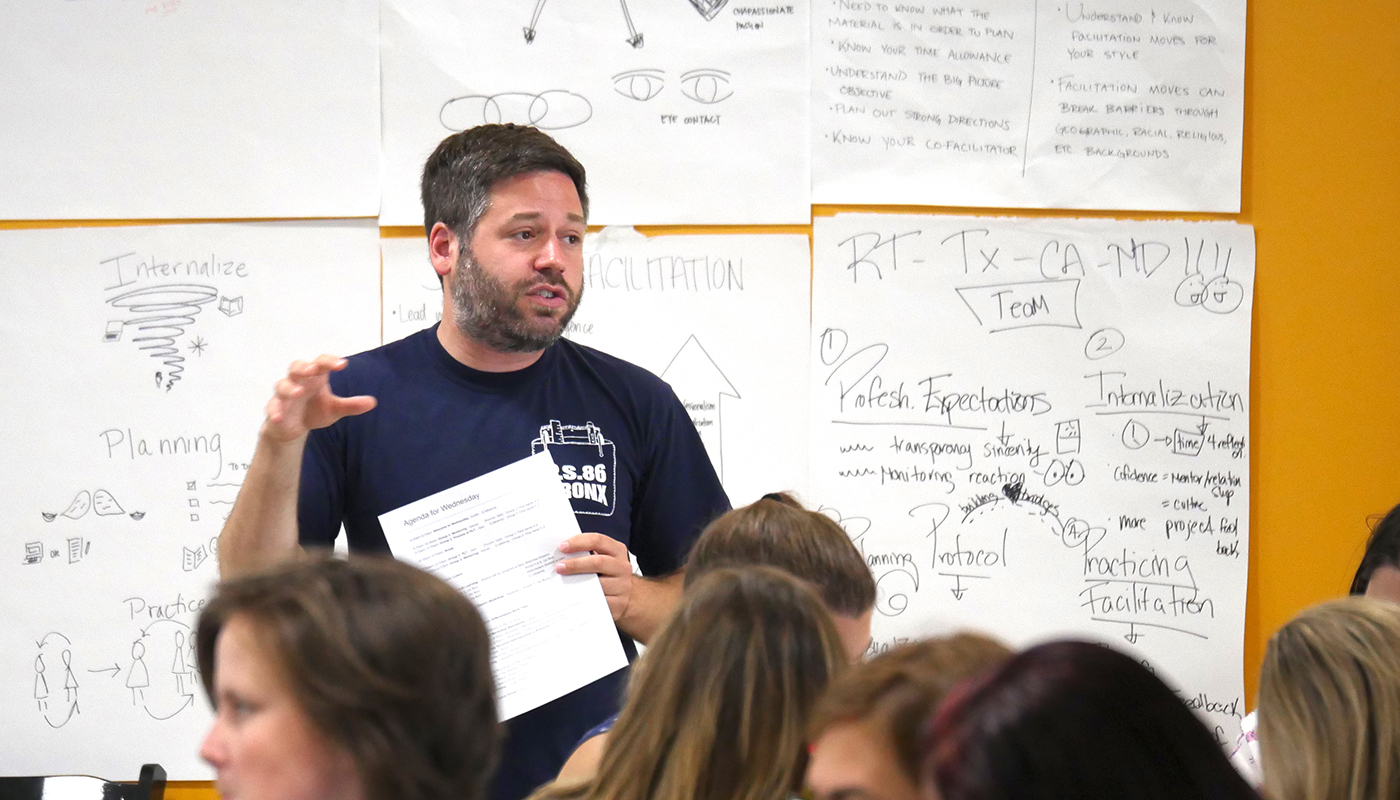
When I began my career as a middle school teacher in New York City, I found myself in a classroom with students of varying needs. While most were multiple years behind grade-level in reading and math, others were reading high school-level texts. While many were ready to navigate having a different teacher for each subject for the first time, others struggled to keep track of their schedule and the different expectations in different classrooms.
Like many novice teachers, I was advised to build my lessons as if my students had no prior knowledge. I was praised when I broke down topics as completely as possible. I was being trained to meet the needs of my students who needed the most support and to generalize their needs to everyone else in the class. So, like many teachers, I spent my time rewriting texts, adding vocabulary lists and sharing those adjusted materials with all of my students, independent of their need. For some students, this approach was exactly what they needed to make progress, but it left me with little time to support students who were ready to move faster.
What I didn’t realize then was how much I was contributing to the fundamental challenges in education that I’ve spent the more recent part of my career working to address: how do we take a classroom of students with varying education backgrounds and academic abilities and help them all make progress so that they are on track for success? How do we as educators, build relationships with each student around his or her unique needs and interests — the types of genuine connections that inspire a love of learning?
I believe that all students have a right to a great education and that we should make sure that all schools—and all teachers—have the training and tools to meet students’ individual needs, creating a collaborative environment that supports their success.
That’s why I am so excited to step into a new role as the executive director of Gradient Learning, a new nonprofit that oversees the Summit Learning program. In four years, the program has matured from a small pilot with 19 schools to one that is working with more than 300 schools across the country due to demand from educators.
The Summit Learning program was pioneered by Summit Public Schools (where I previously served as Chief of Schools). It was Summit’s way of sharing their educational model with educators who wanted to pursue a similar approach. I’m incredibly proud of what has been accomplished over the past four years.
- Summit demonstrated that the approach taken by Summit Public Schools in California and Washington could work in schools across the country when communities came together to reconsider what was possible.
- Regardless of school size, geography, or structure, educators succeeded in adopting the core components of Summit Learning: mentoring, projects, and self-direction.
- Students demonstrated promising progress, and districts expanded Summit Learning to additional grades and campuses.
If the first four years of the Summit Learning program were about demonstrating the potential of this kind of innovative partnership, the next several years will be focused on learning and improving together so that all students have a path to achieve core educational outcomes: mastery of content knowledge, demonstration of college-ready cognitive skills, and development of essential habits of success. As an organization, we at Gradient Learning are focused on helping our district partners meet their goals for student learning — and creating tools and supports that can be adopted by any school in the country.
I’ve spent nearly my whole life in education working at almost every level — from tutor to teacher, principal to program leader. At every step in my career, I have tried to work toward solutions with the potential to change more than one classroom, one school, or one district. I believe that we are closer than ever before to a time when all schools can bring the findings from learning science and the best instructional practices to their students.
I am thrilled to work with an incredibly talented team of educators to make this vision a reality. More so, I’m honored that the work we’re doing improves daily based on our collaboration and partnerships with educators across the country. I can’t wait to see what we can do together next.

